How To Draw A Silkworm Step By Step
In this article, we are going to extend the classroom lesson about silk production through a science activity.
We built an amazing science project model on 'Life Cycle of Silkworm'.
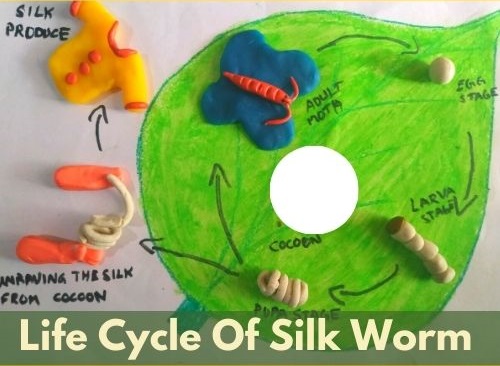
This activity teaches kids about the fiber and silk production. Also, kids get to know about the life cycle of those tiny creatures: Silkworms.
3D Model of Life Cycle of Silkworm
Activity: To create a science fair project and show children about the life cycle of silkworms.
Time Required: It requires 30 minutes to create beautiful 3d model of silkworm lifecycle
Materials Required:
1) Drawing Sheet
2) Pencil
3) Eraser
4) Ruler
5) Crayons (Pick bright colors)
6) Different bright colored Clay
Steps to Make 3D Model
Read on to follow the simple step-by-step instructions of 3d model of life cycle of silkworm.
Step-1: Let us do some Preparation Work
Ask your child to take a drawing sheet and give neat borders to the sheet using pencil.
As we are going to represent the life cycle of silkworm on this sheet, we need to make it beautiful and attractive.
Step-2: Use Art Work Skills
Well, ask your child to draw a leaf shape within the borders defined already on the drawing sheet.
Children can draw the leaf structure using free hand and it came out very well. Also, give internal veins and small branches inside the leaf to keep it more real and natural.
Do not worry if they are not perfect in drawing correct leaf shape.
Let them use any leaf stencil available around our home. Or simply ask them to find a leaf big in size from your garden or backyard.
Step-3: Shading Part
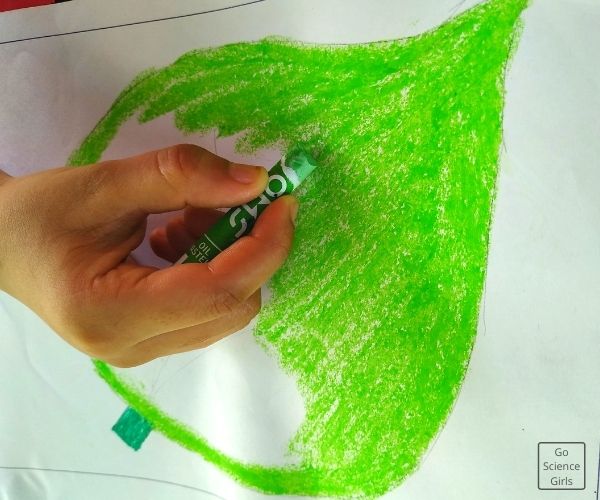
Now, you are ready with a leaf shape on the drawing sheet!
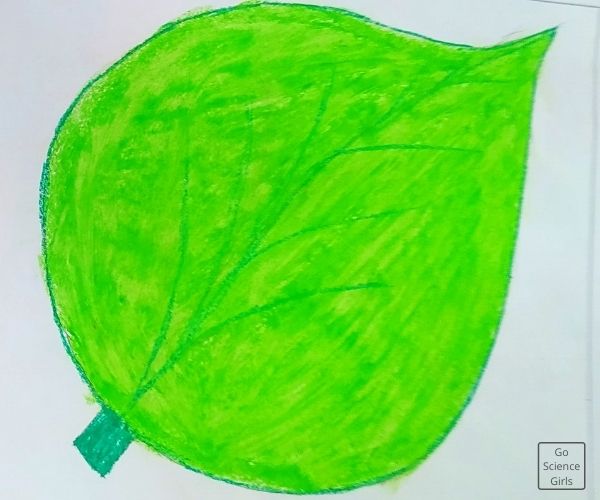
Step-4: Labelling on the Leaf
Draw directions or arrow marks on the leaf leaving some spaces in between as shown in the figure.
We later label these spaces left with different stages of silkworm life cycle.
Use black color sketch to draw directions so that children understand the stages of life cycle of silkworm clearly.
Step-5: Time for Clay Play
Clay plays the hero role in this science activity! Instruct your children to pick some nice dark and bright colored clay moulds.
You can see the pictures attached to get an idea on picking which colors to construct 3d model of life cycle of silkworm.
Step-6: Mould some Shapes
Once you are ready with your colors of clay, get ready to do some shapes that represents different stages of the silkworm life cycle.
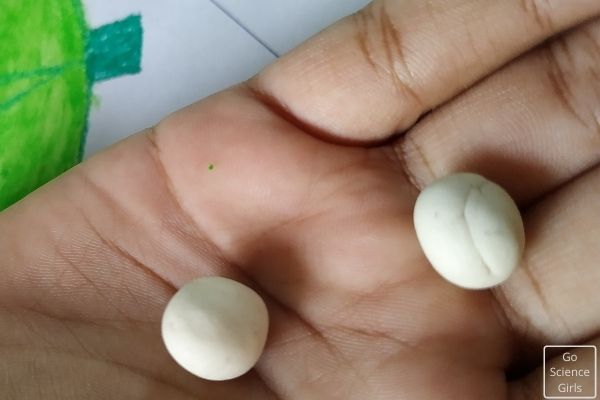
- First, make a small round shape using white colored clay. Make sure the size is medium (not too small or too big) and even in shape.
- The second shape is butterfly shape! Your child can shape a butterfly free hand or simply use any butterfly molds to get exact shape of butterfly. See the pictures to get an idea on how to use different colors to make a butterfly.
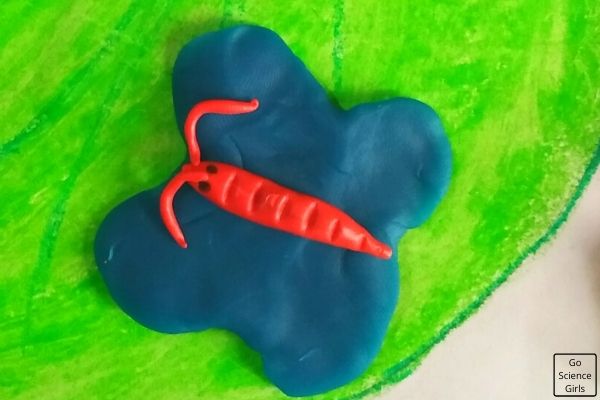
- The next is the shirt shape! You can choose any type of dress to represent the clothing.
- We used bright yellow and red colored clay to make a shirt model.
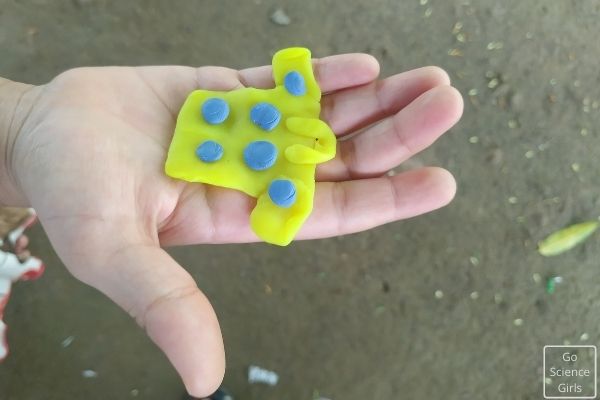
- Moving on, make some more small round shapes using white colored clay. May be 5-6 round shapes are enough. Then, attach them together in a line. It looks like a caterpillar. And give black color to one end of the shape. Or simply pick a little black colored clay and attach.
- Next, make 5-6 small and flat shaped thingies pressed in the centre. And attach these structures as well one after the other in a line as shown in the figure attached.
- Finally, make thin and long shapes that looks like a thread to represent the silk produced from the silkworm life cycle.
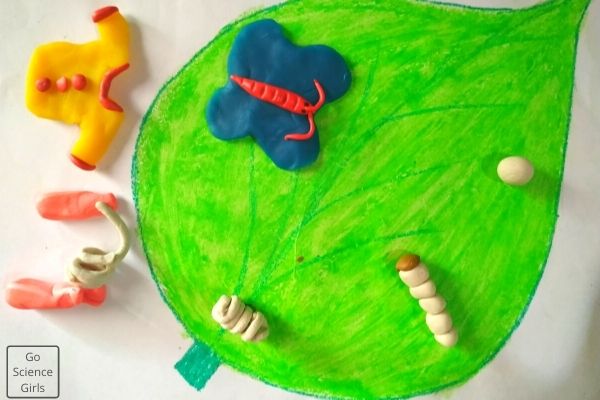
That's it! It is easy to mould clay in to any shape we would like to. So, kids love to do different shapes using clay and stay active with such activities throughout the science activity.
Step-7: Arranging the shapes in an Order to show Life Cycle of Silkworm
Are your kids ready with all the above mentioned shapes in hand? If so, you are ready with everything you want to create a 3d model of silkworm life cycle.
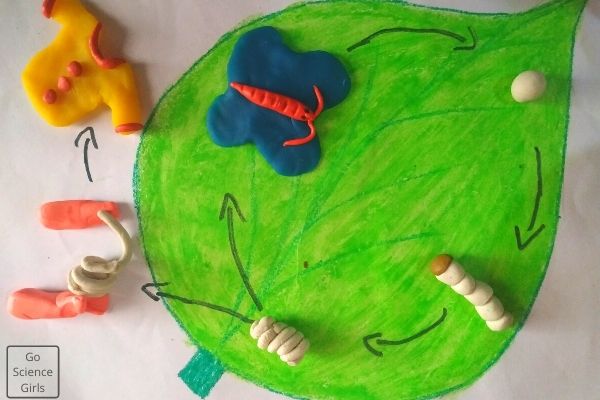
Pick the drawing sheet, on which our leaf model is ready for the activity. Follow the simple instructions step by step:
- Make sure your directions are clockwise and you are following the order of arranging different stages of silkworm life cycle.
- Place the single medium sized round shaped clay ball at the apex of the leaf. Now label this stage as 'Egg Stage'.
- Following it, place the piled round shaped structure in the next space and name it as 'Larva Stage'. Make sure you are following the clockwise order.

- Next to the larva stage is 'Pupa Stage', which is also called cocoon. To represent this pupa stage, we have already made structure piled with flat shaped clay moulds. So, place this structure at this stage.
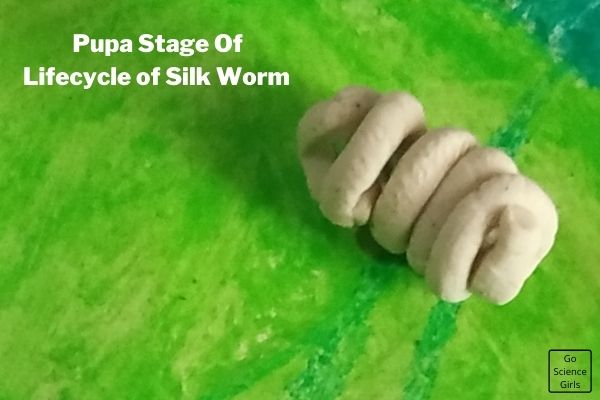
- Pupa stage is the most important stage because humans derive silk from this stage itself. The silk is then processed to produce fibre. And this is the same stage where pupa gets turned into a beautiful butterfly. The butterfly stage is called 'Adult Moth'.
- Keep our clay butterfly at this stage in the next space given.
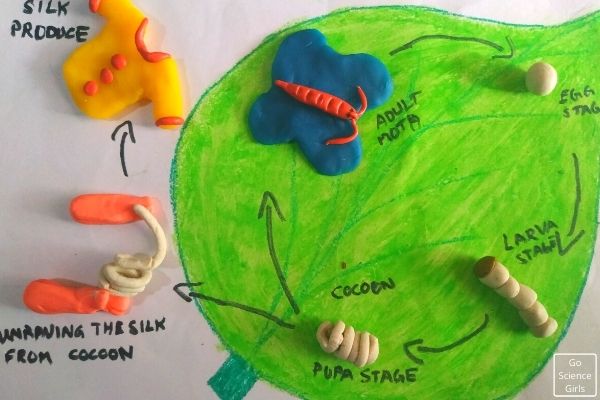
That's it! We have successfully created the 3d model of silkworm life cycle.
Now, let us discuss about various stages of life cycle of silkworm in detail. Also, we are going to learn the history of silkworm and silk production.
History of Silk & Stages of Silkworm Life Cycle
The cocoons of silkworms produces the natural fibre called silk. The main characteristics of fibre strands are thin and continuous.
In general, Fibers are of two kinds: Natural and Synthetic fibres.
Synthetic fibres, referred as artificially made fibres that means man-made fibres. For example: polyester, nylon, etc.
Whereas natural fibers are the natural strands of silk from animals and plants. For example: silk and cotton.
History of Silk
Chinese are the first people to discover silk around 3500 BC.
The whole silk was the only one variety during its initial days after discovered and dispatched to various parts of the globe through trade.
But today due to advancement in technology, we are seeing a plenty new and innovative developments all around the world.
Even the silk production industries are utilizing advanced technological developments to manufacture different types of silks.
They use different types of silkworms from the nature to produce silk fibers in different forms.
These silks differ from each other based on the texture and luster. Sericulture is the process of rearing silkworm.
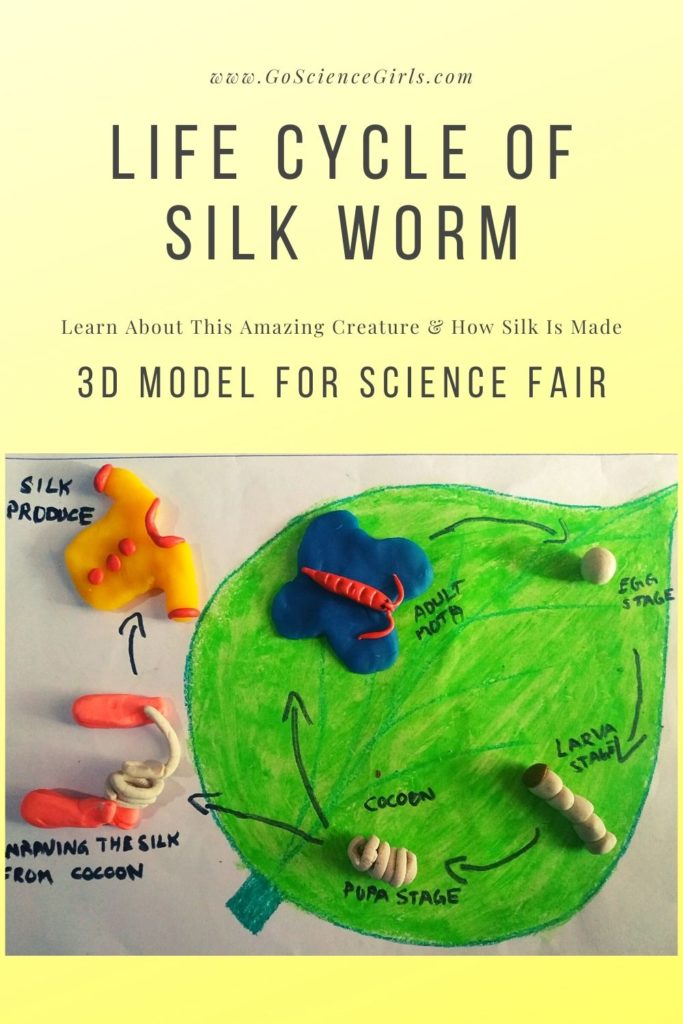
The Life Cycle of Silkworm
The four distinct and serial stages of silkworm life cycle completes one generation and they include: Egg, Larva, Pupa, and Imago.
Generally, a female silk moth starts the life cycle by laying hundreds of eggs. These eggs hatches into larvae.
By feeding on the mulberry leaves, larvae takes pupa stage. In this pupa stage.
The silkworm weaves thin and netted strands of material around itself. This is the protective layer for silkworms in pupa stage and is called cocoon.
More than a few caterpillars gather to form this protective layer. The natural silk fiber is the result of cocoon stage only.
Let us discuss each stage of Silkworms in Detail.
Egg
Egg is otherwise known as 'Ova', the initial phase of silkworm life cycle.
The female silk moth lays eggs usually during summer season but becomes inactive until the arrival of spring.
During spring, it finds the right conditions of weather to hatch.
At a time, the female silk moth lays eggs more than 350 in number. The size of the egg resembles the small ink dot with hard outer layer.
Larva
The egg hatches and gives rise to an extremely hairy silkworm.
This stage is also known as vegetative stage, where the larva grows by feeding on mulberry leaves.
Before the larva goes in to a pupa stage, it molts four times that means it sheds its skin.
An instar refers to the phase between sequential sheds. The silkworm stays in larva stage for about 27 – 30 days.
Pupa and Cocoon
In this stage, silkworm goes into a static stage called pupa stage. It forms a protective layer around itself, resembling a white colored and medium sized cotton ball.
At this phase, it is referred as cocoon, formed with a 1.5 meter long silk thread.
The color of the cocoons can vary (white to golden yellow) from one silkworm to another since they feed on different food sources.
Cocoons also helps silkworm from predators and act as a protective layer. On the other hand, humans collect pupa and kills them by placing in the boiling water.
This way, they unwind the silk thread from the cocoons.
Imago
If pupa left to its natural process of life cycle, it gets metamorphosed into an adult moth.
Once the adult comes out of the cocoon, then the life cycle of silkworm completes successfully.
Female adults are generally smaller than the male adults and are less active.
As males are more active, they fly their wings to attract the opposite sex for the purpose of reproduction. Hence, this stage is called reproductive stage.
The interesting and saddest part of this stage is: male adult dies soon after the process of mating.
Whereas the female moth lays eggs in large number and then it also dies.
The new life cycle of another silkworm begins! Only a few cocoons enter to the reproductive stage as the rest goes for the processing of silk. Interesting huh!!
It is interesting to know that it takes nearly 6-8 weeks for the completion of total stages of life cycle of a silkworm.
The silkworm completes its life cycle quickly when there is warmer weather conditions.
The ideal temperature conditions for a silkworm to complete its life cycle ranges between 23-28 degrees Celsius. Plus the humidity levels should range from 85% to 90%.
Unwinding Silk
Humans collect the cocoons and boil them in the water in order to unwind the long silk threads.
The other way to unwind the silk thread from the cocoons is allowing it to uncover under sunlight. In this way, the process of reeling silk happens.
After this process, the silk on reels undergo bleaching process to spin the silk fibers into silk threads.
This silk is referred as 'Peace Silk' or 'Vegetarian Silk'. It appears like a fluffy, soft, and light colored just like a cloud in the sky. And this yam is the finest silk often used for therapeutic use.
FAQ'S
How do you make a Silk moth life cycle?
The life cycle of a silkworm is interesting to learn and explore! It includes four stages to complete its life cycle successfully. Here are the directions to make a 3d model of silkworm life cycle using clay and some stationary material:
Draw a leaf model on a drawing sheet and shade the inside part using light and dark green colored crayons.
Give the representation of four different stages using arrows in clockwise direction.
First stage says: Female silk moth lays eggs
Second stage says: Eggs flap to larva under ideal weather conditions and the larva of silk moth are called silkworms or caterpillars.
Third stage says: Silkworms construct protective layer made of silk threads to form cocoon. From cocoon, pupa develops.
Fourth stage says: Pupa after few days gives birth to an adult moth.
What are the four stages of Silk moth?
The life cycle of silkworm starts with a female silk moth when it lays eggs. The four stages of a silk moth life cycle includes: 1) Egg or Ova
2) Larvae or Silkworm
3) Pupa and Cocoon
4) Moth
Eggs hatches to larva stage under appropriate and ideal weather conditions. After 3-7 days of larva stage, the silkworm turns itself into a cocoon by weaving silk around itself. Inside the cocoon, it enters the pupa stage. Finally, after completing pupa stage, the beautiful adult moth comes out of the cocoon.
What is the process of silkworm?
The process of collecting cocoons and harvesting them to produce silk is known as sericulture.
First, the silk production manufacturers nurture silkworms by providing mulberry leaves as their feed.
Once the cocoons develop completely, it start pupating stage, it is the time to collect and harvest them for the production of long fibers of silk.
Which is the most active stage of life cycle of silkworm?
The larva stage is the most active stage of life cycle of a silkworm. Because in this stage, silkworms show their growth by feeding on mulberry leaves into an extremely hairy caterpillars.
Eventually, they start building protective layer made of silk threads in order to protect from predators. This is the stage called cocoon stage.
During which stage of the life cycle is silk produced?
During pupa stage, the silk production happens. The pupa stage is the most significant and motionless stage seen in holometabolous insects.
Holometabolous insects are the insects which shows four stages to undergo metamorphosis to develop into an adult.
So, during the pupa stage of life cycle of silkworm, the humans collect and harvest cocoons to produce silk.
How long does it take for a silkworm to make a cocoon?
It takes a month or 27-29 days for a silkworm to make a cocoon. At the stage of making a cocoon, silkworm size start increasing 10,000 times and finally measures around 21/2 to 3 inches in length.
And the silkworms get out of the cocoon and pupa stage after metamorphosing. This results in giving birth to an adult moth and the process takes about 2-3 weeks.
Which is the most famous silk?
There are many types of silk available on the market but 'Mulberry Silk' is the most famous silk around the globe.
90% of world's silk production contributes to the production of mulberry silk. That is the reason, the term 'silk' is generally referred as the silk harvested from the silkworm, Mulberry.
Who invented silk?
Silk was first invented in China during Neolithic period around 3500 BC. Based on Chinese folklores, the wife of Yellow Emperor, Lady Hsi-Ling-Shih invented the process of silk production i.e. sericulture.
What is the first step in silk production?
The first step in silk production is: silk reeling process and developing silk fibres.
How long can a silkworm live?
A male silkworm can live until it does mating with the female silkworm.
Whereas the female silkworm can live until it lays eggs. The complete silkworm life cycle varies between 7-8 weeks.
If the weather conditions are warmer, then the completion of silkworm life cycle is quicker.
How long do silkworm eggs take to hatch after being laid?
A female silkworm naturally lays eggs during late July month but it depends on the weather conditions where it lives.
Ideal weather conditions play significant role in the process of hatching eggs.
If there are constant fluctuations in the weather conditions, eggs may hatch much before the expected period. However, under ideal weather conditions a silkworm egg takes 7-10 days to hatch.
What does silkworm feed on?
The only food on which silkworms feed are mulberry leaves. But it is difficult for them to find enough food during fall and winter months because the mulberry leaves fall off in this period.
The manufacturers of silk production protect safe and ideal environment for silkworms to feed on mulberry leaves instead of falling as prey for ants, mice, etc.
Does silkworm turn into butterfly?
Absolutely yes. A female moth lays eggs and start the life cycle of silkworm to give birth to a beautiful butterfly. Silkworm is the larva stage in its life cycle.
Silkworm builds a silk covering around itself and forms cocoon. Inside the cocoon, silkworm starts pupating stage and undergo metamorphosis.
After metamorphosis the pupa stage gives rise to an adult which is nothing but a butterfly.
Why are cocoons stifled?
Silk Production manufacturers need to harvest the cocoons in order to collect silk threads out of them. In that process, stifling, a method used to expose and dry the cocoons under sunlight.
Drying the cocoons is mandatory because it protects cocoons from damage when stored for long time.
In simple words, stifling is a process of killing pupa by evaporating moisture and one of the significant steps in sericulture.
What is the other name of silkworm?
Silkworm is the most significant insect that bags economic importance in silk industry. Because it is the primary source of silk production.
The other name of silkworm is Bombyx mori. It is a domestic silk moth from the Bombycidae family and is a closest species to Bombyx mandarina, which is a wild silk moth.
How To Draw A Silkworm Step By Step
Source: https://gosciencegirls.com/life-cycle-of-silkworm-3d-model/
Posted by: jolleycapecontabir.blogspot.com

0 Response to "How To Draw A Silkworm Step By Step"
Post a Comment